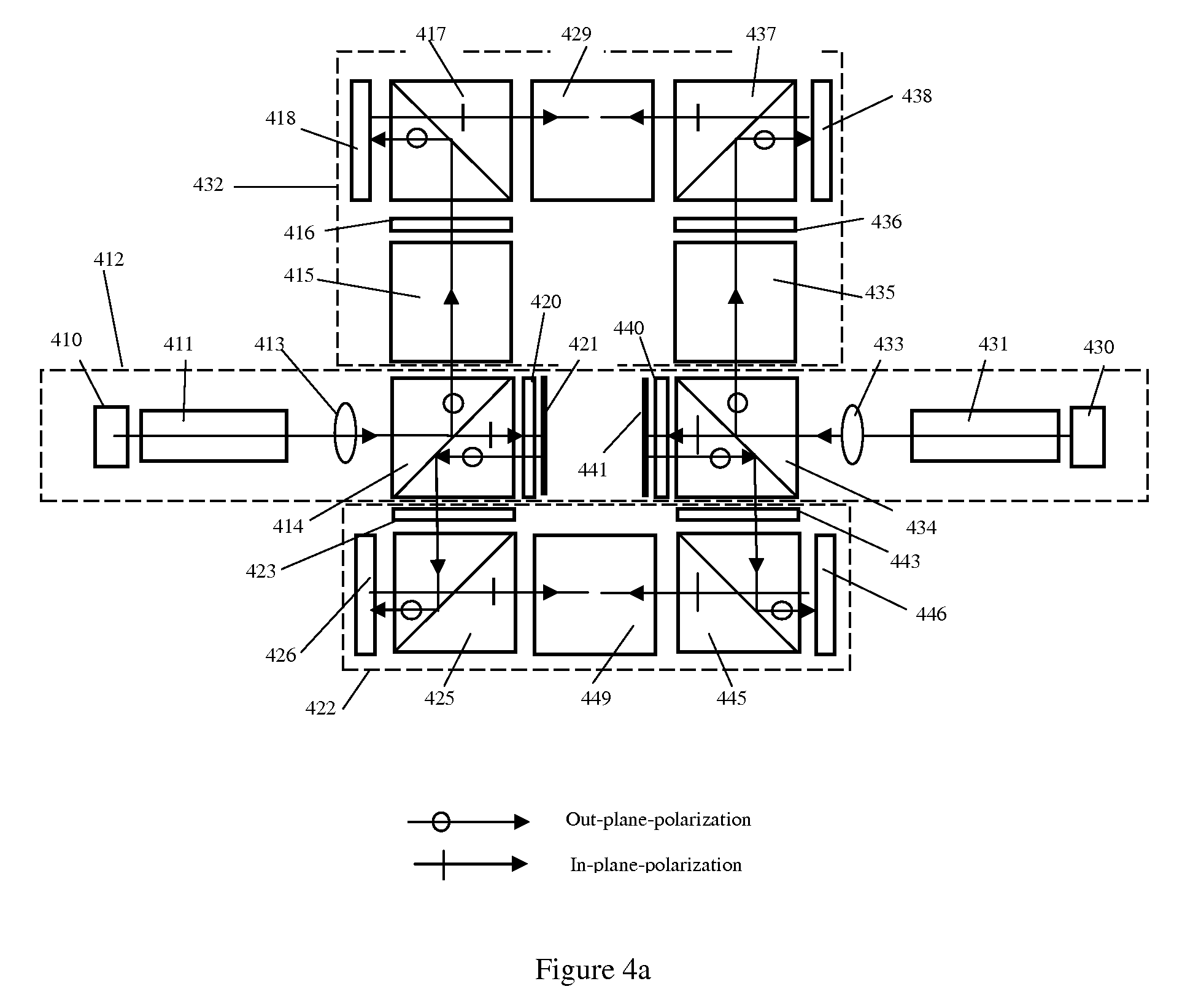Stereoscopic image display employing solid state light sources
a technology of solid state light source and stereoscopic image, applied in the field of stereoscopic display, can solve the problems of false stereoscopic perception, fatigue to the eye, strong stereoscopic sensation, etc., and achieve the effect of reducing system cost, high efficiency of optical energy use, and reducing cross talk between two stereoscopic channels
- Summary
- Abstract
- Description
- Claims
- Application Information
AI Technical Summary
Benefits of technology
Problems solved by technology
Method used
Image
Examples
Embodiment Construction
[0035]In this invention, a novel digital simultaneously stereoscopic image display is disclosed. The term “simultaneously stereoscopic image display” is referred to the display means in which the stereoscopic image pairs, which are recorded with synchronized shutters simultaneously, is displayed through two optical channels at same time, and viewed individually by left and right eye of the observer. In the present design, the optics of the stereoscopic display can use solid state light source efficiently and also enable the sharing of a number of optical components by both channels. As a result, the optical system is more compact, optically efficient and meanwhile less costly. In addition, the use of solid light sources not only increases the reliability and life time of the light source significantly, but also enlarges the color gamut of display. The solid state light sources discussed in this invention include, but not are limited to, light emitting diode (LED), super luminescent ...
PUM
 Login to View More
Login to View More Abstract
Description
Claims
Application Information
 Login to View More
Login to View More - R&D
- Intellectual Property
- Life Sciences
- Materials
- Tech Scout
- Unparalleled Data Quality
- Higher Quality Content
- 60% Fewer Hallucinations
Browse by: Latest US Patents, China's latest patents, Technical Efficacy Thesaurus, Application Domain, Technology Topic, Popular Technical Reports.
© 2025 PatSnap. All rights reserved.Legal|Privacy policy|Modern Slavery Act Transparency Statement|Sitemap|About US| Contact US: help@patsnap.com



